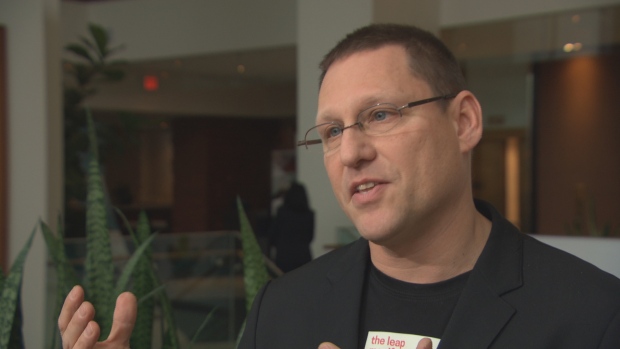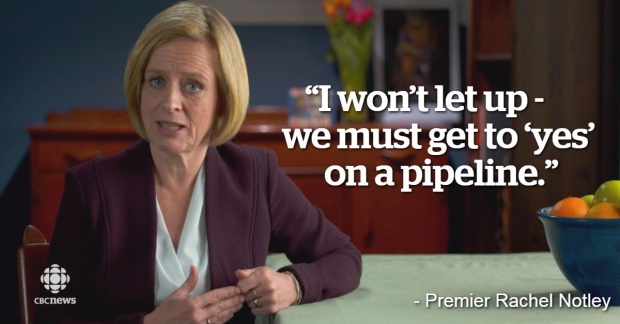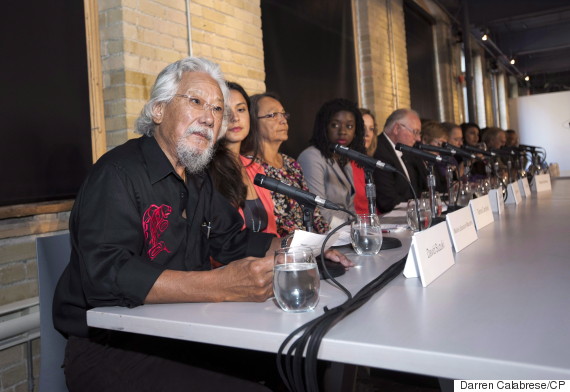Lewis says he wants Leap Manifesto principles to be ‘law of the land’

By John Paul Tasker, reposted from CBCNews, Apr 8, 2016
One of the big names behind the Leap Manifesto has his sights set on the Liberal government — despite recent overtures by some members of the NDP to adopt the document as its own.
“The party we really want to influence is the one that’s in government because we want these principles embedded in the Leap Manifesto to become the law of the land,” Avi Lewis, a climate change activist and filmmaker, said in an interview with Chris Hall on CBC Radio’s The House.
Lewis said during a recent Leap Manifesto town hall in Toronto, a Liberal MP sat in on the discussion, addressed the crowd and cornered organizers to learn more about the manifesto, which calls for dramatic action on climate change, a rebuke of Canadian consumer capitalism and a renewed focus on fighting inequality.
- Proposed NDP resolutions reveal grassroots itching to shift to the left
- Tom Mulcair and the NDP try to figure out where to go next
- Tom Mulcair will ‘do everything’ to keep oil in the ground if party tells him to
The document has a wide range of supporters, including actors, labour unions and environmentalists. It was unveiled in September during the election campaign but received scant attention by any of the major parties at the time.
“We’re happy and excited to talk to any political party that’s interested. Let’s be honest, there might be a political party that would have no interest in talking to us,” Lewis said with a laugh, referring to the Conservative Party.
The Tories would find the call for a moratorium on pipeline development — and a complete shift to clean technology by 2050 — counter to its largely pro-oilsands agenda.
But despite the desire of Leap Manifesto organizers to influence the Liberal government, which has adopted a decidedly more “green” narrative than its predecessor, Lewis is also happy to court support from the NDP.
Leave oil in the ground
NDP Leader Tom Mulcair said that if his party adopts a policy to attempt to end the age of fossil fuels by keeping oil and coal in the ground, he will act to make that policy a reality.
“If the party decides that’s the way, as the leader of the party, I’ll do everything I can to make that a reality, but Canadians have been told too many things that haven’t panned out for the last 20 years,” Mulcair told Peter Mansbridge in an interview with CBC’s The National.
Mulcair speaks to Mansbridge about fossil fuels development debate0:46
A number of New Democratic party supporters have also drafted a series of policy resolutions in advance of this weekend’s convention that could further tie the party to the manifesto.
Lewis and former NDP MPs Craig Scott and Libby Davies endorsed a resolution jointly proposed by the Vancouver East and Toronto–Danforth riding associations that rejects a wholesale endorsement of the manifesto, but rather calls it a “high-level statement of principles.”
The resolution encourages internal debate as to how the manifesto’s policy prescriptions can be adapted and modified to fit within the confines of the party’s next electoral platform. Those discussions will then inform the pre-convention policy process leading up to 2018.
The resolution was selected by NDP party delegates at the convention in Edmonton on Friday over other more radical proposals that called for the party to adopt the manifesto in full, without further discussion. It will go to the convention floor on Sunday, before Mulcair addresses the delegates.
Lewis said he was broadly supportive of the NDP’s stance.
“I think it’s an enlightened response by a political party that, like all national parties, has different regions and different interests. You know, the [NDP] premier of Alberta went on television to call for a pipeline and the Leap Manifesto says ‘No new fossil fuel infrastructure.’ These are clearly thorny issues that need to be grappled with,” Lewis conceded.
The filmmaker said that Notley’s support for a pipeline, while understandable, is short-sighted given what he calls the climate crisis the world is facing.

“The science is absolutely clear. The consensus … 97 per cent of climate scientists have established a carbon budget for the world. If Canada is going to use up its fair share we have to be fossil fuel free by 2050. I don’t quite understand how we can be building the infrastructure of the last century,” he said.
The activist did not reserve criticism for the oil and gas industry, but also took aim at trade deals the government has penned with other countries.
The manifesto calls for an end to all existing trade deals because of mechanisms that allow corporations to sue countries, calling such provisions a threat to a government’s capacity to help rebuild struggling local economies.
Avi Lewis touts Leap Manifesto as key to NDP’s future2:05
RELATED:














